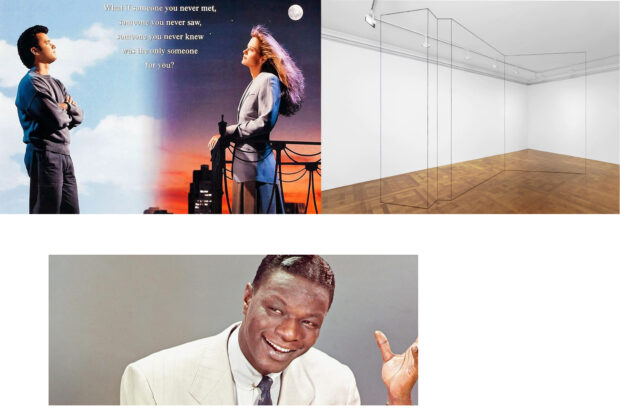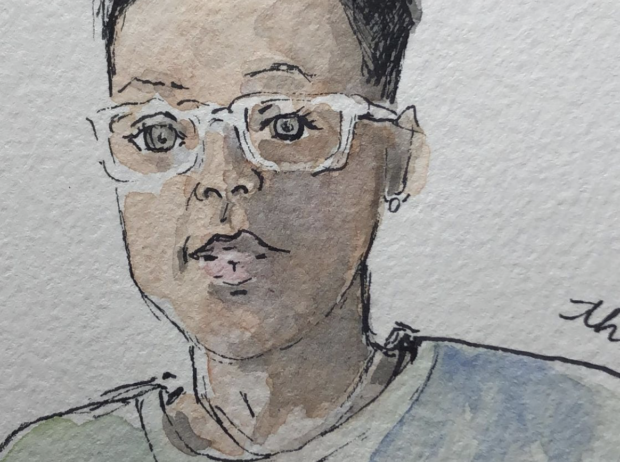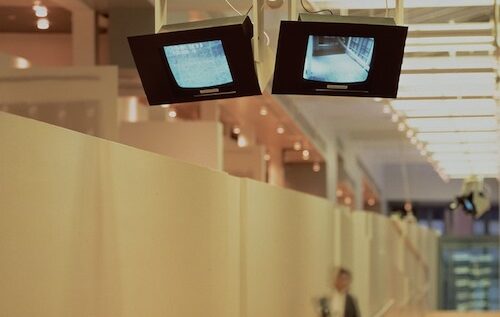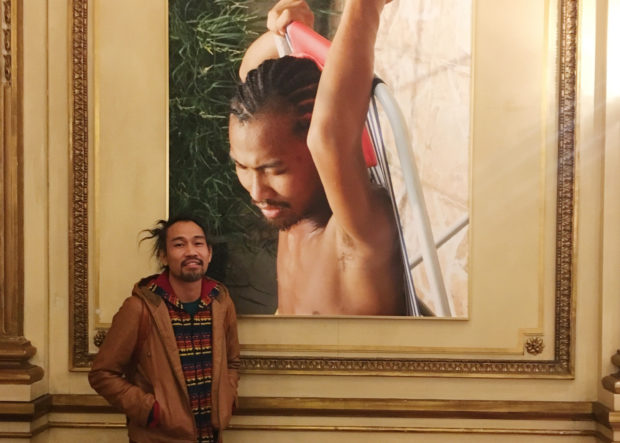Editor’s Note: This review was written in March 2012. It has been reprinted here in its original form.
For someone interested in Los Angeles art, Pacific Standard Time (PST), the Getty Initiative that connects over 60 Southern California cultural institutions and museums in an 11-month exploration and celebration of postwar Los Angeles culture, feels like a limited-time offer for an all-you-can-eat buffet. I have been visiting my parents’ home less and less over the past few years, feigning adulthood, but the advent of PST has rekindled my interest in visiting the old ancestral stomping grounds. This school year (2011-2012), I am capitalizing on my family connections and making three trips to Southern California—over Thanksgiving break, winter break, and in February for the CAA conference—to take in as much of PST as possible. Here, I’ll report on my pilgrimage in a series of three posts.

Itinerary: 2 exhibitions, 4 CAA panels
Money spent on parking: $8
Money spent on public transit: $33
Money spent on tickets: $5
Tanks of gas: 1.5
Freeways traveled: the 134, the 101, the 210, the 57, the 5, the 60, the 10
Exhibition catalogs purchased: 1
Tchotchkes purchased: 0
Having never attended CAA officially, I felt that it was time to get my art historian wings this year, since the conference’s presence in Los Angeles meant that I had a free place to stay and the chance to visit a few last PST exhibitions. Also, the panels themselves were amenable to my purpose, with many sessions and papers focusing on the postwar Los Angeles art world, and sometimes PST specifically. Others have written better—and funnier—accounts of their time at the conference, so I’ll stick to the official story. (Just to say: the LA Convention Center has terrible food options.)
On the first day of the conference, Wednesday, 22 February, my agenda opened with a bang: a panel simply titled “Pacific Standard Time” [$16.50 Metrolink/Metrorail]. The papers given were all by PST insiders: Jenni Sorkin and Lucy Bradnock, Getty research fellows, and Richard Meyer, who curated an exhibition. Director of the Getty, Andrew Perchuk, joined them for the panel discussion. Sorkin’s paper, “An Even More Gendered History of the Woman’s Building, 1921-1991,” treated what I’ve labeled as one of my favorite exhibitions, Doin’ It In Public at Otis. She discussed the history of the women of Chouinard, the Woman’s Building, and Cal Arts, as well as the various educational environments and pedagogical strategies emphasized by the institutions. Bradnock presented “Portrait of the Artist as an Amateur: Wallce Berman’s Pop,” describing Berman and Ed Kienholz’s “reluctance toward mastery,” which she portrayed as part of the larger West Coast Pop emphasis on craft and the subjective. She made a good argument for the persona of “the amateur” as a factor in the LA Pop/assemblage world, although I think its distinctiveness in West Coast Pop is more complicated when compared to both East Coast “amateurs” such as Warhol and West Coast “professionals” such as Ruscha.
Meyer, Associate Professor at USC, spoke on his experience curating the MoCA exhibition Naked Hollywood: Weegee in Los Angeles. After guiding us through his process and the gallery results, Meyer ended with a sort of exhortation. He wondered what it would look like if art historians started practicing “site-specific scholarship,” and reminded listeners to be mindful of both what objects were originally, and what they have become—the art in PST is not all “Art,” as he explained it. The panel discussion was lively, and picked at a theme that had emerged from all three papers: “feeling into form” in Los Angeles, which Bradnock pithily described as “not being embarrassed by affect,” or the allowance for earnestness and the subjective personal experience. There was a whiff of compensation to the tone of the panelists, understandably, as they lamented how art history continues to return to the trusty canon instead of bringing new material into it (Perchuck) and that PST should change the conception of all American art, not just the constructed NY/LA dialectic (Bradnock).

International Center of Photography, Bequest of Wilma Wilcox, 1993, © Weegee/International Center of Photography/Getty Images
I had no Los Angeles panels to attend on Thursday—I was too busy gawking at the Rosalind Krauss extravaganza—but Friday brought two [$16.50 Metrolink/Metrorail]. First, I went to what turned into one of my favorite panels of the conference, “Finish Fetish Sculpture from Los Angeles 1960s-1970s: Conservation Dilemmas.” Robin Clark of MCASD, who curated Phenomenal, presented “Light, Space, Surface: Poetics and Practicalities in the Display of Finish Fetish Works of the 1960s and 1970s.” She introduced some of the main Light and Space artists—Larry Bell, Peter Alexander, De Wain Valentine and Robert Irwin—and described the complicated and differing viewpoints of the artists on damage and re-fabrication. Andrew Perchuk gave a paper called “Light and Space: Specialty Shop and Hi-Tech.” Perchuck placed due emphasis on the workshops and technological advancements that made these artists’ constructions possible, and talked about “re-skilling” as an unusual, West Coast direction in 1960s and ‘70s art. Monica Steinberg, the sole graduate student, presented “The Real and Reflected Self: Finish Fetish and the Alter Ego,” in which she described Larry Bell’s persona “Dr. Lux,” and read the implications of reflection, both introspective and physical. Rachel Rivenc, Assistant Scientist at the Getty, presented a technical viewpoint in “The Artist as Maker: Materiality and Authenticity,” impressing the art historians in the room (at least this one) with graphs and charts and terms we’d all left in high school chemistry, while persuasively explaining the opportunities and limitations imposed by each artist’s production and materials. Last, John Griswold, owner of Griswold Conservation Associates, further investigated the ethical issues and concrete decisions (eg. subtractive vs. additive) made about “finish fetish” objects in “The Lens of Authenticity: Strategies for Retaining Evidence of Original Fabrication While Conserving Finish Fetish Objects.”
The panel discussion was engrossing; I almost (almost!) made a comment. I’ve mentioned previously that I’m not a fan of the term “finish fetish,” but in the context of this panel it was somewhat helpful because the focus of all participants was how to care for, display, and even theorize works with pristine surfaces. One reason that this panel was so successful was that it presented a widely divergent roster of professional viewpoints. Clark and Perchuk were concerned with the objects and their materials in an art historical and exhibition sense; Steinberg theorized, as any good graduate student would, and offered a case study of how to consider the works anew; Rivenc and Griswold reported from the field, as it were, and did a good (and humorously exasperated) job reminding us that at the end of the day we stop talking and make a decision, either doing or not doing something, which significantly affects the artwork.
The next panel, “Los Angeles Writes Itself: L.A. Art Journals from the 1960s to the Present,” featured participants of the L.A. art publishing world, including editors and founders of High Performance, X-TRA, and a recent site I’ve enjoyed, East of Borneo. Although a lot of the session was anecdotal, the contributors sufficiently outlined the compounded trials and exhilarations of publishing independently, circulating materials in the art world, and doing both in Los Angeles when the audience for their journals had to be gathered and solidified.
On Saturday I drove up to the final day of the conference [$5 parking] and attended the morning panel “Pacific Standard Time and Chicano Art: A New Los Angeles Art History.” While many of the panels (I won’t say “all”) I’d attended at CAA had been energetic, this one became, shall we say, spirited, partly because of its heavy-hitting panelists. First, Ruben Ortiz-Torres, Professor at UC San Diego, presented “MEX/LA: ‘Mexican’ Modernism(s) in Los Angeles,” noting that while PST included some Chicano art, the damage of years of neglecting Mexican and Mexican-American art has not yet been undone. Chon A. Noriega of UCLA gave “X Marks the Spot: LA Xicano and Art History,” in which he described his experience from the point of view of the Chicano Research Institute’s (CRI) involvement in PST, which included four exhibitions and two catalogs. The original four institutions brought on to PST were MoCA, LACMA, the Hammer, and CRI, and Noriega spoke eloquently about not wanting people—the Getty or the viewers—to feel like they had been “let off the hook” by one token Chicano art exhibition because that community and those who study it don’t just have “one thing to say.” Next, Terezita Romo, from the San Francisco Foundation, talked provocatively on stylistic hegemony and the damage of terms like “identity politics” and “hybrid art” in “Curating in the Chicano Art Rearview Mirror: The Mexican-American Generation.” Romo pulled no punches, and her talk affected me more than any other I heard at CAA, as I grappled with my response to her accusation.
[youtube http://www.youtube.com/watch?v=KFCNK9SEQJY?rel=0&w=560&h=315]
Artist Sandra de la Loza spoke about her incisive project at LACMA in “Mural Remix: An Artist’s Intervention into the Discourse of Chicano Muralism.” She tried to widen our conception of muralism in Los Angeles, away from big-name attractions by Siquieros or others to the graffiti vigilantly pursued by the city and to the hidden murals of local communities that move beyond the stereotypical political to the psychadelic, the religious, the abstract, and the fantastical. Last, Karen Mary Davalos of Loyola Marymount presented “What Does Inclusion Look Like? New American Art Histories,” tracing the reception history that has moved from periodization to expansion to insertion without losing the separateness tacitly performed by the hierarchy of adding something to something else; she acutely pointed out the complete lack of PST involvement in East Los Angeles, an area full of Chicano communities. As Noriega said, the body of work by ASCO, as in the retrospective at LACMA, is “recognizable” to the art world. But a large amount of Chicano art would be less familiar to the traditional art historical canon, pushing and challenging its priorities and definitions.
There were three PST exhibitions that I really wanted to see, but I ended up only having time for two of them (the third was Clay’s Tectonic Shift: John Mason, Ken Price, and Peter Voulkos, 1956-1968 at the Scripps Gallery). On Sunday, a friend accompanied me the two-hour drive up to Santa Barbara for Pasadena to Santa Barbara: A Selected History of Art in Southern California, 1951-1969 at the Santa Barbara Museum of Art [free Sunday entry; $3 parking]. The exhibition focused on two museums, the SBMA and the Pasadena Art Museum, now the Norton Simon Museum, both directed at one point by Thomas W. Leavitt.
Included was work by artists who had been shown at the museums in the ’50s and ’60s, making the case that these institutions were championing local artists long before PST. The show was organized formally: a “Gestural” room included John Altoon and Karen Appell; a Hard-edge room included John McLaughlin, Helen Lundeberg, and Karl Benjamin; etc. In the largest room certain work seemed to be stretching the definition of “local” artists–Motherwell, and Tobey specifically–but mixing it in with Sam Francis, Larry Rivers, Ed Kienholz, Beatrice Wood, and Llyn Foulkes motioned towards the ultimate goal of PST exhibitions: bringing postwar Los Angeles work to the point of no longer needed “Los Angeles” as a modifier.

My PST grande finale was L.A. RAW: Abject Expressionism in Los Angeles, 1945-1980, from Rico Lebrun to Paul McCarthy at the Pasadena Museum of California Art [$5 student entry; free parking]. This show, which displayed work by 41 artists, brought to light postwar figurative work, mainly by painters, that dealt with a “boldly honest, stripped-down view of humanity in its rawest, most elemental state” and made an argument for the “ongoing relevance of expressionism.” This survey exhibition does a lot to expel the viewpoint that postmodern Los Angeles art is all aesthetic lights and pristine resin–many of the works are grotesque and visceral and squirm-inducing. Political and physical, it offers a separate trajectory for postwar art, speaking more to Daumier and the German Expressionists than the Constructivists and De Stijl artists.
This is probably the place where I am supposed to make an overarching declaration on the success or failure of PST, and what it means for the field of art history. But this piece is too long as is and, frankly, I’m not in the mood. I’ll just say this: It was an ambitious and flawed and vital initiative. It set out to accomplish everything, and actually did accomplish a lot. It fostered collaboration between LA-area museums, funded and published substantial scholarly research, aired well-known and under-known artists, often together, and gave California artists, scholars and the public a forum for dialogue about issues like regionalism, influence, hegemony, materials, environment, and Hollywood. The Getty is planning a 2013 continuation of PST, albeit smaller, which focuses on architecture and urban planning. And the art historical parade rolls on.








[…] A Pacific Standard Time Travelogue, Part 3 […]
[…] and making three trips to Southern California—over Thanksgiving break, winter break, and in February for the CAA conference—to take in as much of PST as possible. Here, I’ll report on my […]